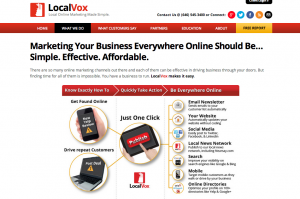 As mobile marketing continues to mature, so do the ideas behind connecting the 300 million mobile phone users and Web browsers in the U.S. to the products and services offered by a plethora of marketers.
As mobile marketing continues to mature, so do the ideas behind connecting the 300 million mobile phone users and Web browsers in the U.S. to the products and services offered by a plethora of marketers.

Mobile consumers represent the biggest growth opportunity for marketers looking to leverage their advertising dollars across mediums where their audience “lives.” Mobile marketing continues to prove itself a viable option for companies of all sizes and across all industries, whether the mission is to sell more products, increase brand awareness, beef up an existing customer database or socially engage prospects.
Unfortunately, many companies are still stuck in the “text messaging” mindset. They assume that SMS (short message service) ads sent out to prospects’ cell phones are the only mobile technique that works. These marketers are missing the boat. Text messaging may be the foundation of mobile marketing, but it’s certainly not the only option.
Here are a few mobile marketing tips that should be incorporated into your company’s advertising portfolio right now:
Mobile Advertising
Incorporate a call to action or a brand banner ad into a mobile application, and you’re in the mobile advertising game. You can get started by embedding text links in your display ads and graphics banners. Typically sold on a CPC (cost-per-click) system, these ads allow for easy campaign ROI measurement and introduce a young mobile generation to your company and products. According to the digital marketing research firm InsightExpress, these mobile ads perform about five times better than Internet ad placements, which makes them especially attractive for companies looking for better response rates from their mobile efforts.
Adidas is using mobile ad campaigns to build brand awareness for its products. Its most recent effort incorporated a “Light You Up” mobile banner ad campaign intended to drive foot traffic in New York City’s Penn Station. Mobile users across multiple mobile platforms and located within a three-mile radius of the station were invited to Adidas’ light show, which introduced the Adidas Adizero F50 soccer cleat. The event drew thousands of attendees according to the company.
Location-Based Mobile Media
Foursquare is one of several companies making inroads in the location-based mobile media field. Foursquare allows users to collect points, prize “badges” and coupons for going about their everyday business and for letting other people know exactly what they’re up to. Users link those activities to Twitter, Facebook and other social-media outlets, but location-based mobile is also applicable for businesses. Companies use the service to offer promotions, build brand awareness, attract new customers and reward their top clients.
Outback Steakhouse tested out a location-based campaign earlier this year and wound up netting more than 600 check-ins. According to Mobile Marketer, the Richmond-based effort was part of a NASCAR marketing program and took place over a three-week span in April. “…we actually had over five restaurants and 678 people unlocked the offer in Foursquare, which if we were to do that nationwide at many restaurants over three weeks, it’s millions of dollars in incremental revenue,”said Karen Soots, vice president of media services at Bloomin’ Brands in Tampa.
QR Codes
Those odd-looking barcodes made up of spots instead of traditional bars are beginning to attract the attention of curious consumers. Also called 2D barcodes, QR codes contain data that can be read or scanned by smart phones. Once scanned, the codes whisk customers off to a website, landing page, mobile website or other destination. Real estate firms are using QR codes to advertise their for-sale listings and retailers are using them to offer mobile coupons.
Home Shopping Network (HSN) has been using this mobile-marketing technique for some time by placing QR codes in the corner of the television screen during its sales pitches. Customers who used their phones to scan the codes were delivered to a product page on HSN’s mobile website and were able to link to a checkout page, enter their credit card numbers and close the deal.
Proximity Marketing
If you’ve ever punched a phrase into your mobile web browser and generated a pop-up ad from a local car dealership along with the search results, then you’ve been exposed to the concept of proximity marketing. Also known as “bluecasting” or “Bluetooth marketing,” proximity marketing works well for marketers looking to target current, past and prospective customers in specific geographical locations. As one of the newer mobile marketing options, proximity marketing relies on transmitters that are installed in select public locations and target the exact spot where the customer is standing. Sent to the user’s phone, the marketing message includes a request for permission for content to be delivered to the device. A longtime entry on every marketer’s “wish list,” proximity marketing has gained ground over the past few years and will continue to do so as users become accustomed to accepting marketing messages via their cell phones and mobile devices.
As mobile marketing continues to mature, those of us in the advertising industry continue to think up new ways to connect consumers on the go with the products and services presented to them by our clients. Considered affordable and fairly easy to implement, mobile marketing serves as the hottest option today for companies looking to squeeze the most ROI from their multi-media advertising dollars.








